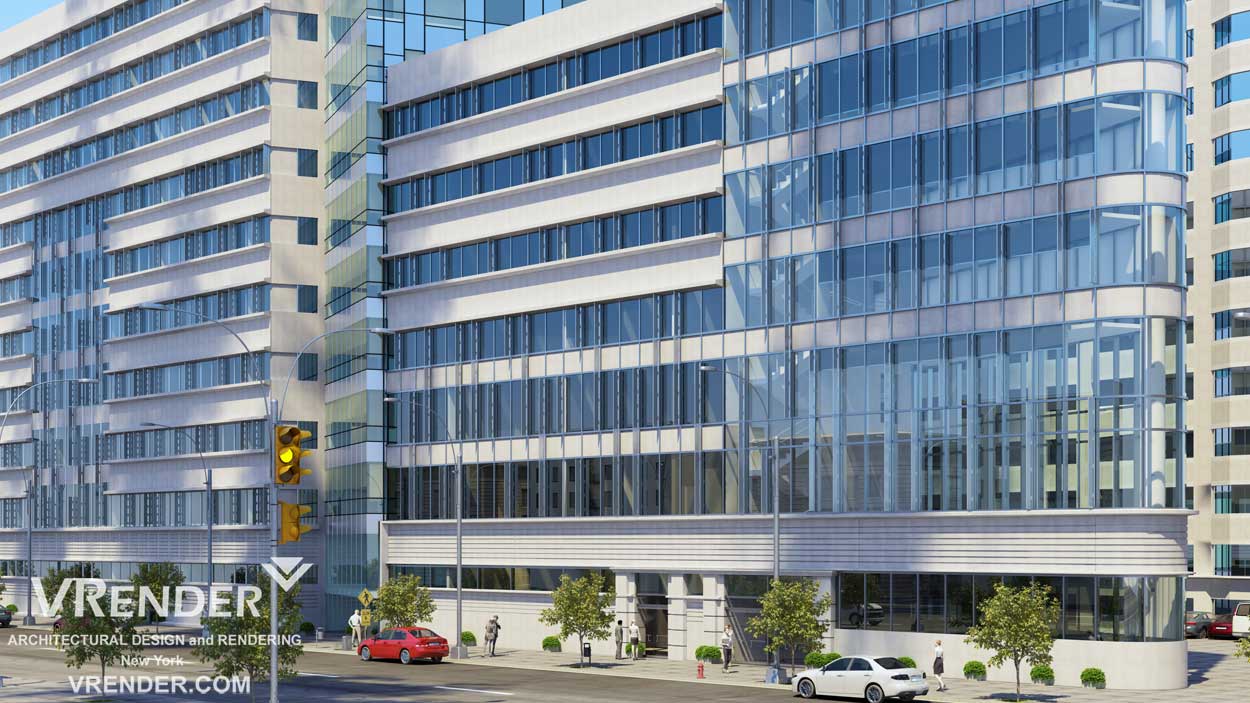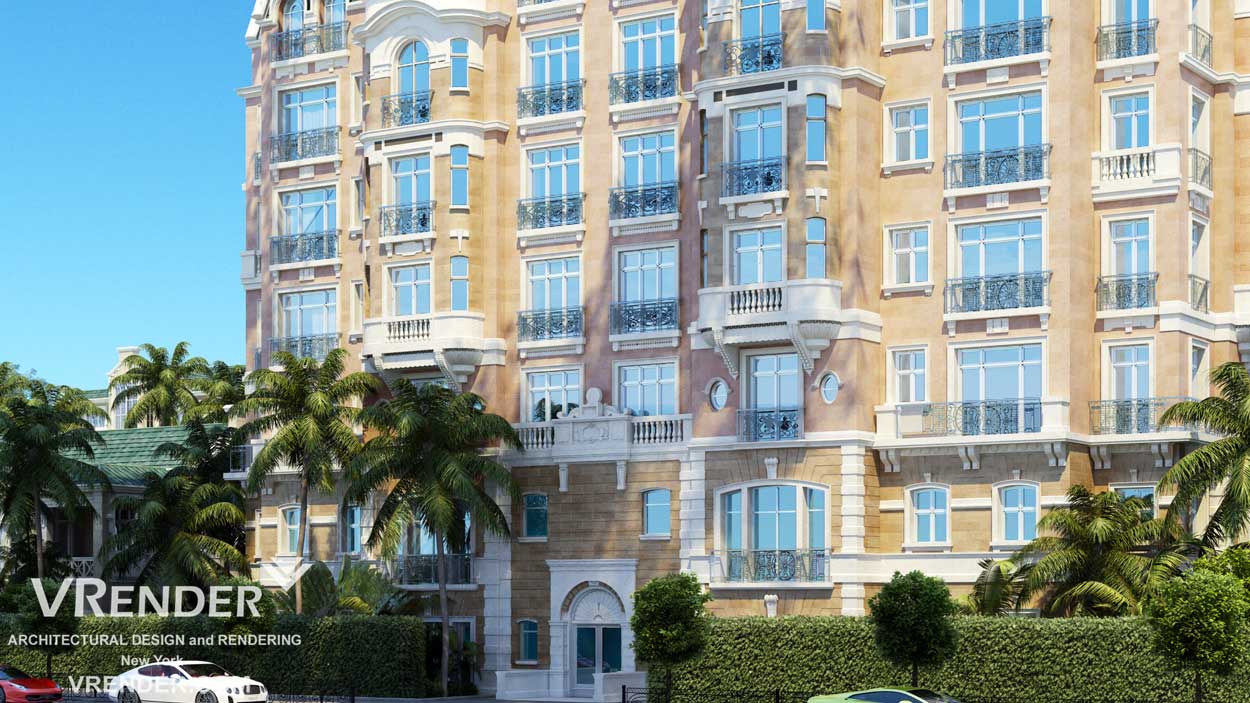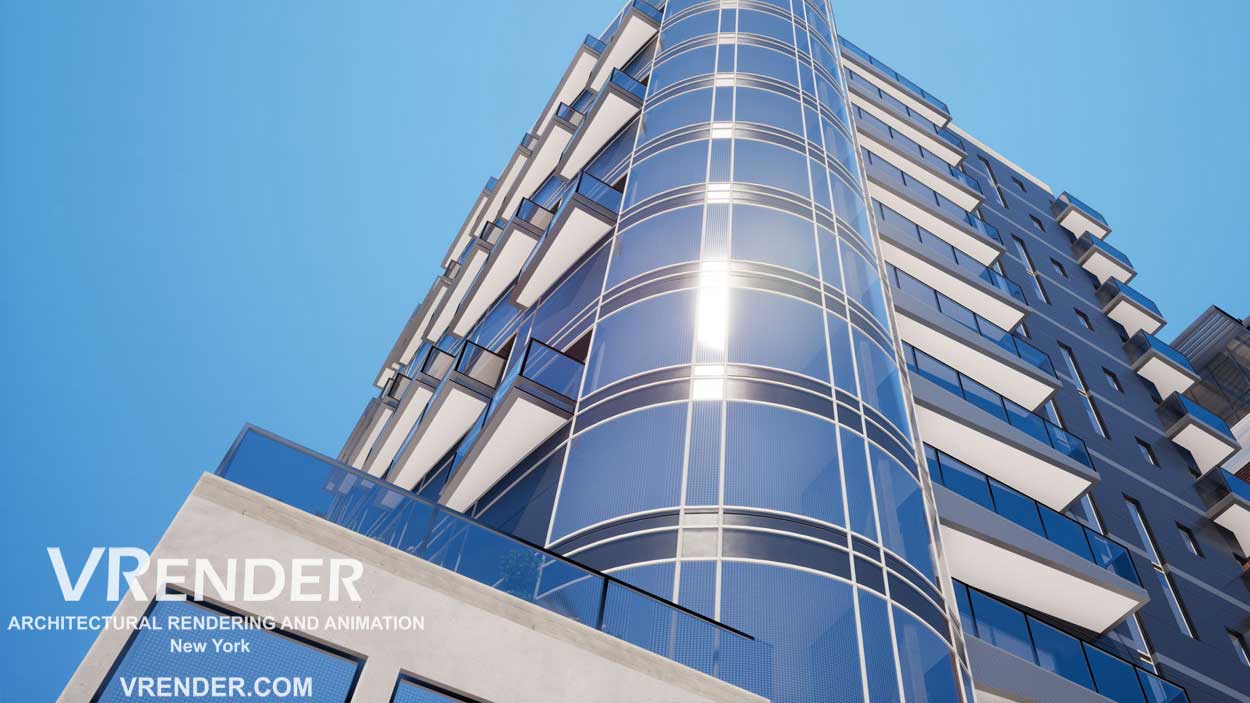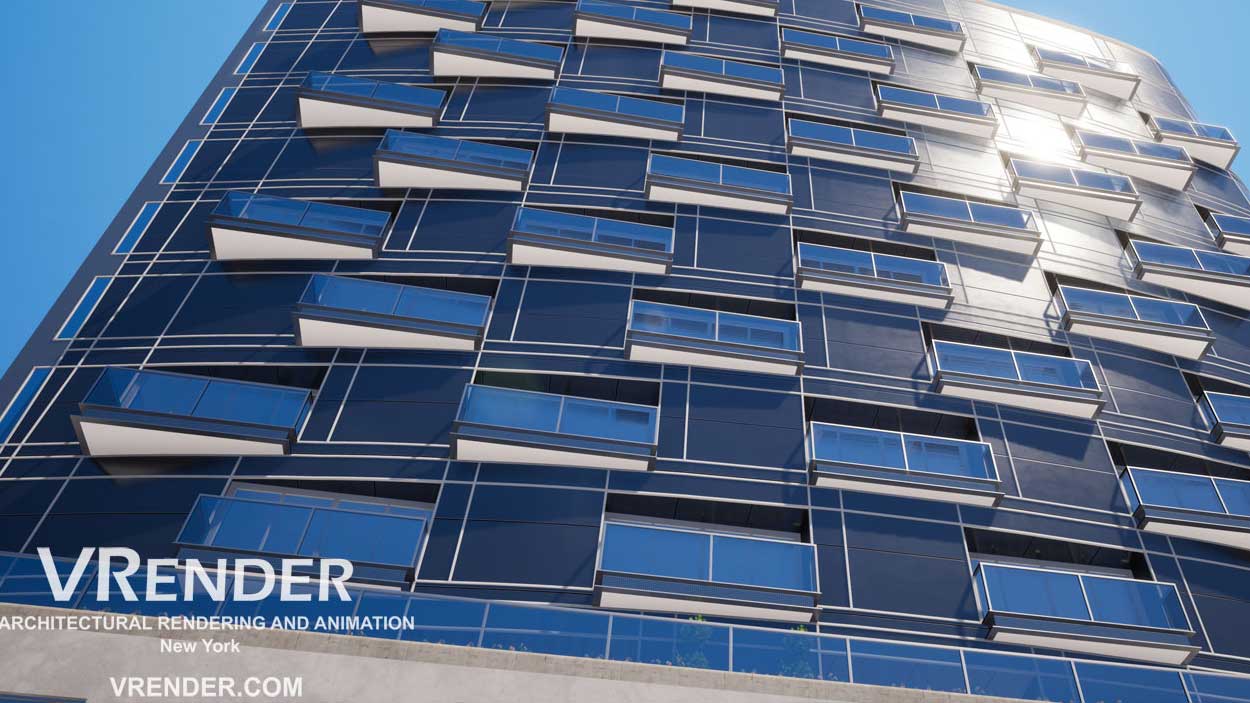In industrial design and architecture, it is important to get an idea about subject or object before it will be launched on a conveyor or built. It is better to see once than to hear 20 times. Three-dimensional modeling allows obtaining photorealistic images of objects that exist only as ideas or projects.
Commercial buildings are buildings that are used for commercial purposes and include office buildings, warehouses, shopping malls, hotels,retail buildings.
Visibility greatly increases the value of the product in the eyes of customers and investors. Often only qualitative 3D visualization can describe the essence of design solutions to customers, thereby multiplying the value of architectural work. During the communication between the performer and customer, volume visualization attached to a project allows to correctly understand each other and shifts the discussion into a completely new level, reducing the time of decision-making process to even architecturally uneducated customer.
In order to create a positive impression about the quality of materials applied on the object, visualization should realistically convey color, texture, reflectivity, transparency and light scattering, giving the viewer tangible sensations of the surface.
In interior design, it is important to accurately convey the lighting, in order to assess how a room and its components will look like in the daytime, in different weather conditions, in the evening, with artificial lighting. Good visualization takes into account such parameters of the light source as power, color temperature, shape, size, and degree of light scattering. Light modeling has huge value when it comes to designing of expositions, showrooms, lighting decorations, during designing of the light scenery of public and residential interiors.
Who should make the 3D visualization?
Depending on the design stage, visualization (architectural visualization is simply named ‘vis’) must be done by different people.
1) During the creative search and elaboration of technical solutions, intermediate visualizations are required, which are usually performed by the designers themselves. Often, intermediate visualizations are made as schemes or outlines. If the development process includes the construction of three-dimensional objects, then intermediate volumetric visualizations can be obtained using the capabilities of the design programs. However, such visualizations cannot be used for high-quality demonstration of the object to the customer and usually give only an idea about the shape.
2) On the final stage of designing, there is a need for a final (professional) visualization. Such visualization significantly differs with the more detailed elaboration of surfaces of objects, lighting, and ambiance. Images received on the stage of final visualization are a “product” themselves, which are demonstrated to the customer. Therefore, they should be more detailed, expressive, and have artistic value. This work no longer can be performed by the designer. Therefore, it is advisable to entrust such final visualization to separate specialists – visualizers.
Ways to visualize
Depending on the way the object is displayed, visualization can be classified.
Steel image — the image (or several images) of the object under the necessary angle. High-resolution images are suitable for placement in the press and outdoor advertising.
Panoramic or spherical image — allows interactively to rotate an object or virtual camera on the monitor, and the position of the observer in the space does not change.
Animation — the image of the object in dynamics based on a scenario specifically designed for demonstration.
Virtual inspection — allows becoming familiar with the object (more often, the interior) by arbitrary displacement and rotation of the virtual camera in the object’s space and behind its borders.
Interactive interaction — includes all the possibilities of virtual inspection, plus multimedia capabilities, as well as the interaction with the virtual world of the object (for example, switching on the light, music in the interior, management of mechanisms in industrial design and so on).
3D visualization of this architectural project included several stages of work:
• Import of a 3D model of the building of the congress center from sketch up in 3D Max and its optimization and texturing
• 3D modeling of the curved façade of the building, which is adjacent to the left from the central one
• elaboration of lighting
• elaboration of the environment (drawing parking markings, roads, and landscaping)
• creation of 3D models of lighting devices and external navigation for parking
• lighting improvement
• day and night view rendering
• post-processing.
If you need a spectacular presentation of your architectural project (3D visualization of an architectural project) for a site or presentation to a customer, then all you need to have is a technical assignment. The more specific, understandable, and detailed it is the less is the cost and the due date.
Vrender Company.







